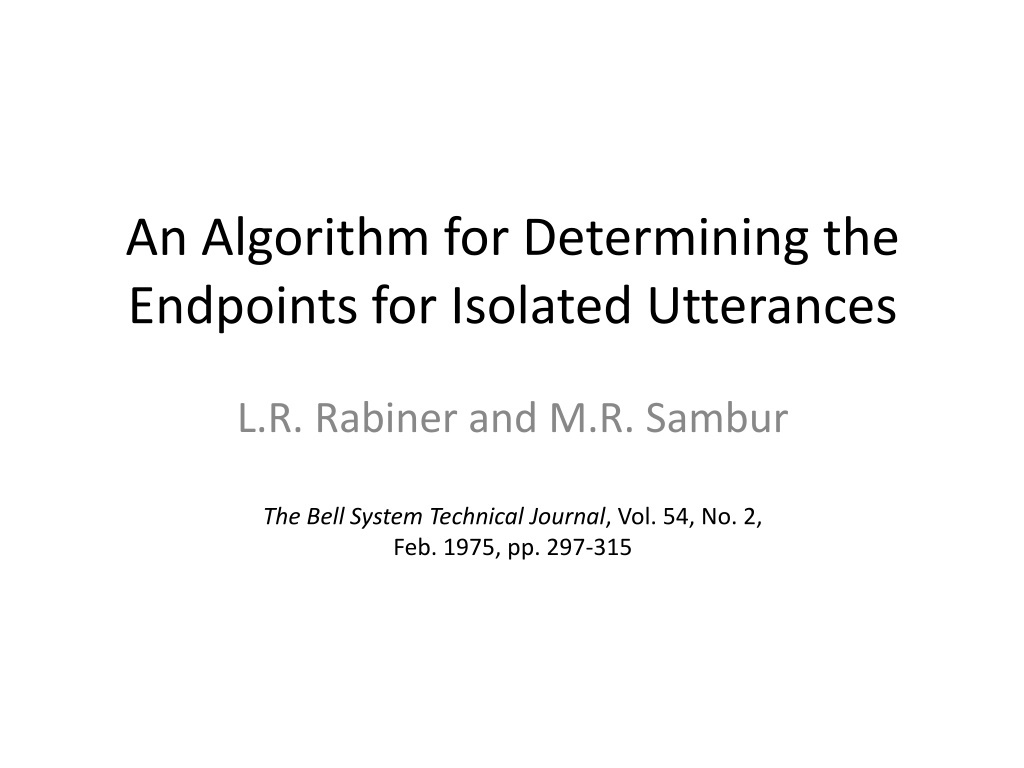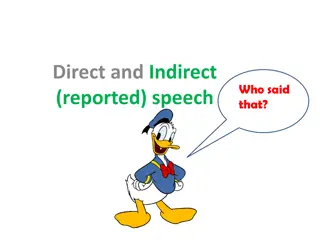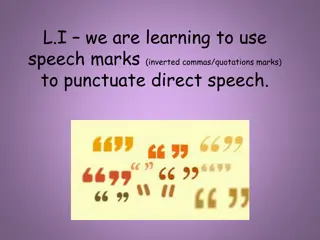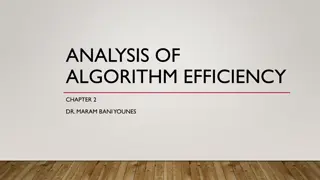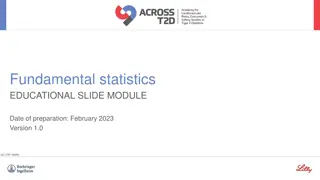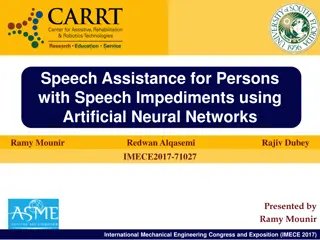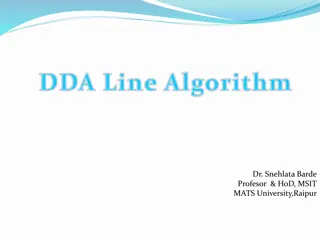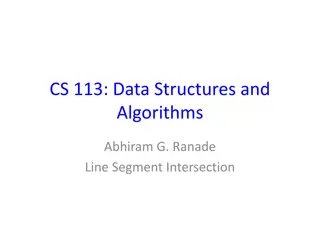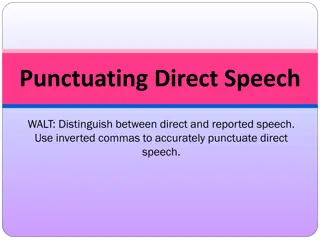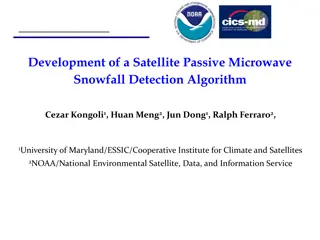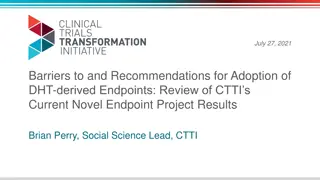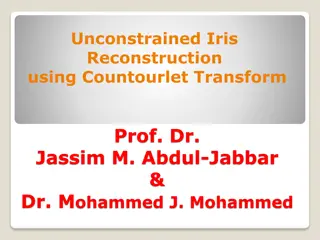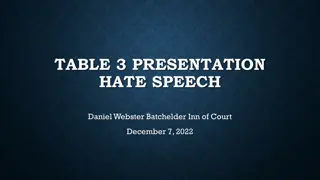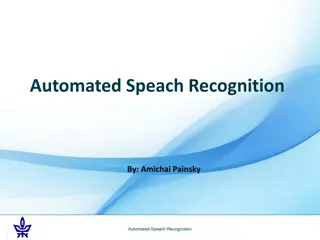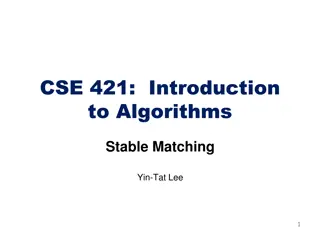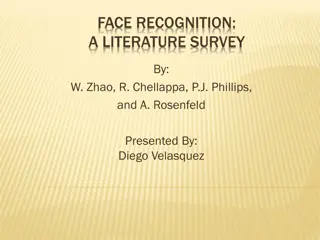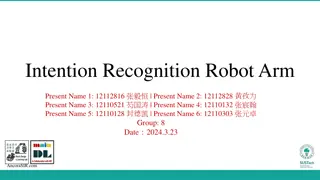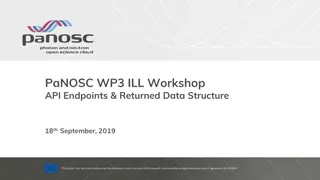Algorithm for Determining Endpoints in Speech Recognition
This article discusses an algorithm proposed by L.R. Rabiner and M.R. Sambur in 1975 for determining endpoints in isolated utterances. The algorithm focuses on detecting word boundaries in speech through the recognition of silence, which can lead to reduced processing load and increased convenience, particularly in noisy environments. By utilizing measurements such as energy and zero-crossing rate, the algorithm offers a simple, efficient, and cost-effective solution for speech recognition tasks.
Download Presentation

Please find below an Image/Link to download the presentation.
The content on the website is provided AS IS for your information and personal use only. It may not be sold, licensed, or shared on other websites without obtaining consent from the author.If you encounter any issues during the download, it is possible that the publisher has removed the file from their server.
You are allowed to download the files provided on this website for personal or commercial use, subject to the condition that they are used lawfully. All files are the property of their respective owners.
The content on the website is provided AS IS for your information and personal use only. It may not be sold, licensed, or shared on other websites without obtaining consent from the author.
E N D
Presentation Transcript
An Algorithm for Determining the Endpoints for Isolated Utterances L.R. Rabiner and M.R. Sambur The Bell System Technical Journal, Vol. 54, No. 2, Feb. 1975, pp. 297-315
Outline Intro to problem Solution Algorithm Summary
Motivation Word recognition needs to detect word boundaries in speech Recognizing silence can reduce: Processing load (Network not identified as savings source) (Hands-free operation not identified as convenience) Relatively easy in sound proof room, with digitized tape
Visual Recognition Eight Easy Note how quiet beginning is (tape)
Slightly Tougher Visual Recognition Six sss starts crossing the zero line, so can still detect
Tough Visual Recognition Four Eye picks B , but A is real start /f/ is a weak fricative
Tough Visual Recognition Five Eye picks A , but B is real endpoint V becomes devoiced
Tough Visual Recognition Nine Difficult to say where final trailing off ends
The Problem Noisy computer room with background noise Weak fricatives: /f, th, h/ Weak plosive bursts: /p, t, k/ Final nasals (ex: nine ) Voiced fricatives becoming devoiced (ex: five ) Trailing off of sounds (ex: binary , three ) Need to do with simple, efficient processing Avoid hardware costs
The Solution Two measurements: Energy Zero crossing rate Show: simple, fast, accurate
Energy Sum of magnitudes of 10 ms of sound, centered on interval: E(n) = i=-50 to 50 |s(n + i)|
Zero (Level) Crossing Rate Remember, digital audio values are changes in air pressure (higher or lower than base) Base/midpoint is zero But is always positive if unsigned (e.g., 127 if unsigned byte) Zero crossing rate is number of zero crossings per 10 ms Normal number of cross-overs during silence Increase in cross-overs during speech
The Algorithm: Startup At initialization, record sound for 100ms A measure background noise Assume silence Compute average (IZC ) and std dev ( ) of zero crossing rate Choose zero-crossing threshold (IZCT) Threshold for unvoiced speech IZCT = min(25 / 10ms, IZC + 2 )
The Algorithm: Thresholds Compute energy, E(n), for interval Get max, IMX Have silence energy, IMN Compute to values: I1= 0.03 * (IMX IMN) + IMN (3% of peak energy) I2 = 4 * IMN (4x silent energy) Get energy thresholds (ITU and ITL) ITL = MIN(I1, I2) ITU = 5 * ITL
The Algorithm: Energy Computation Search sample for energy greater than ITL Save as start of speech, say s Search for energy greater than ITU s becomes start of speech If energy falls below ITL, restart Search for energy less than ITL Save as end of speech Results in conservative estimates Endpoints may be outside
The Algorithm: Zero Crossing Computation Search back 250 ms Count number of intervals where rate exceeds IZCT If 3+, set starting point, s, to first time Else s remains the same Do similar search after end
The Algorithm: Example (Word begins with strong fricative)
Algorithm: Examples Half Caught trailing /f/
Algorithm: Examples Four (Notice how different each four is)
Evaluation: Part 1 54-word vocabulary Read by 2 males, 2 females No gross errors (off by more than 50 ms) Some small errors Losing weak fricatives None affected recognition
Evaluation: Part 2 10 speakers Count 0 to 9 No errors at all
Evaluation: Part 3 Your Project 1b
